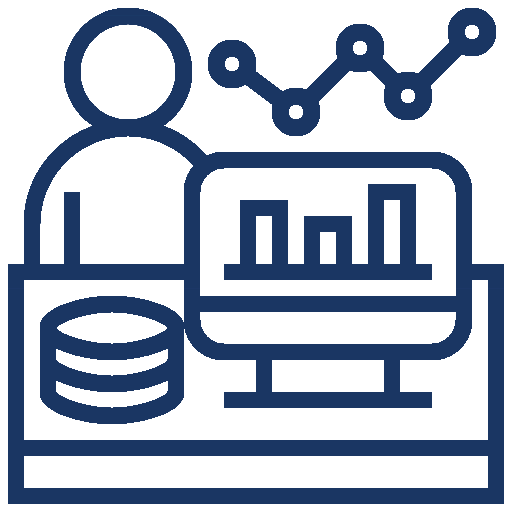Today, we’re uncovering the top 10 mistakes that often trip up even the savviest of analysts. Buckle up and prepare to navigate the treacherous waters of analysis methods, summary tables, filtering techniques, and chart selection.
1. Skipping the Planning Phase
Taking a premature plunge into data analysis without having a well-structured plan in place can result in scattered insights and overlooked opportunities that could have been beneficial. The importance of taking the necessary time to comprehensively define your objectives cannot be overstated. These objectives will serve as the guiding light for your overall strategy. Once these are firmly established, you can confidently dive into the data, knowing that your approach is purposeful and directed. This way, you can ensure that all your efforts are aligned with your end goal, making the entire process more efficient and effective.
2. Overcomplicating Summary Tables
When you’re preparing to share your data, it’s important to remember that creating overly complex summary tables can often do more harm than good. It can lead to confusion rather than clarity, especially for an audience that may not be familiar with the intricacies of your data. So, it’s crucial to keep your tables simple and straightforward. Concentrate on highlighting the key insights that matter most to your audience. These could be the most surprising findings, the most impactful results, or the statistics that best support your overall message. By focusing on these key points, you’ll be able to communicate your message more effectively and ensure your audience understands the most important takeaways.
3. Misapplying Filtering Techniques
The incorrect application of filters in any form of analysis can significantly distort the results that we obtain from such investigations, potentially leading to conclusions that are not only misguided but potentially harmful in their implications. It’s therefore of utmost importance to always double-check your filter settings to confirm their accuracy. Equally important is informing readers of possible impact of any hidden formulas on your dashboard. This not only ensures that these settings accurately reflect your initial criteria but also guarantees the integrity and reliability of your analysis, providing a solid foundation for any conclusions or decisions your users will draw from it.
4. Using Inappropriate Chart Types
Choosing the incorrect type of chart can not only obscure the insights that you’re trying to share, but it can also mislead your audience, leading to incorrect assumptions and conclusions. It is of critical importance to select chart types that most effectively visualize your data. This will ensure that the information you’re trying to convey is understood clearly and accurately. A well-chosen chart can make your data more engaging and easier to grasp, thereby successfully communicating your intended message. I often hear “…but I don’t want to use too many bar charts…”. But the reality is, bar charts are often the best way to represent categorical data…however there are many ways to spruce up your bar charts and highlight additional insights. Simplifying and automatically highlighting insights is a great way to get creative.
5. Neglecting Data Validation
It is essential to understand that failing to validate data inputs can have serious implications. It can result in inaccurate analysis and conclusions that are unreliable, which can lead to misguided decisions and strategies. It is therefore crucial to always verify the accuracy and integrity of your data before proceeding with any analysis. This involves checking the data for any errors or inconsistencies, and ensuring that it is complete, relevant and accurate. Doing so not only enhances the reliability of your analysis, but also helps in drawing conclusions that are valid and dependable.
6. Ignoring Data Visualisation Best Practices
Ignoring the best practices in visualisation can lead to the creation of cluttered and confusing charts, which fail to effectively communicate the intended insights. It’s highly important to follow certain principles when creating visualisations. These include clarity, which ensures that the information is easy to understand; simplicity, which avoids unnecessary complexity and confusion; and relevance, which ensures that the visualisations are tailored to the specific needs and interests of the audience. By adhering to these principles, you can create effective and engaging visualisations that clearly communicate the key insights and findings.
7. Forgetting to Customise Charts
Relying on default chart settings for your visual data representation can unfortunately result in visualisations that come across as generic and uninspiring, lacking a unique touch that differentiates them from countless others. This can lead to your audience disengaging and not fully appreciating the data you’re presenting. To mitigate this, it’s highly recommended to customise your charts and tooltips to better align with your message and insights. This not only helps to maintain consistency across all your communications but also significantly enhances the visual appeal of your charts. By adding insights, your charts become more engaging, dynamic, and memorable, making your data all the more impactful.
8. Overlooking Data Interpretation
The failure to interpret the results of an analysis within their appropriate context can lead to decisions that are not based on accurate understanding, resulting in action plans that may not effectively address the issues at hand. It’s essential to allocate sufficient time to fully comprehend the implications of your analytical findings. Understanding these results not only involves identifying trends and patterns but also appreciating their potential impact on your strategic decisions and actions. Once you have a complete understanding, it’s important to communicate these findings in a manner that is clear and easy for others to understand. This clear communication ensures that everyone involved in making decisions has a comprehensive understanding of the information at hand, leading to more informed and effective strategic planning. Finding the time to perform this additional analysis may seem daunting, but is usually time freed up by automating much of the work required in data preparation, transformation, loading and in identifying possible insights.
9.Underestimating the Importance of Audience Analysis
If you dismiss or overlook the preferences, specific needs and data literacy of your target audience, you run the risk of creating charts and visualisations that do not effectively communicate the information or fail to engage the audience. It’s important that you understand their interests and priorities. By doing so, you can tailor your data analysis methods and visualisation techniques to suit them. This means creating visualisations that can be easily understood and appreciated by your audience. You should prioritise the data and information that they find most relevant and portray it in a way that aligns with their comprehension and aesthetic preferences.
10. Lacking Continuous Learning
As an analyst, it is crucial to stay updated with the latest analysis methods and tools. Failing to do so can significantly hinder your effectiveness and productivity in your role. It’s not just about understanding the current landscape, but also about anticipating future trends, technologies, and methodologies. By investing time in ongoing learning and professional development, you can ensure that you stay ahead of the curve. This will not only enhance your skill set but also increase your value as a professional. Embrace a mindset of continuous learning to excel in your career and contribute significantly to your organisation’s success.

Navigating the Data Landscape: An Exploration of Analytics and Analysis Techniques
In today’s data-driven era, the ability to extract valuable insights from vast datasets is essential for informed decision-making and strategic planning. Join me as we delve into the realm of analysis methods, charting a course towards understanding and mastery, with the assistance of Tableau—of course.
Unveiling the Power of Data Analytics
In our modern world, data is abundant and omnipresent. It flows through organisations, across industries, and shapes our understanding of the world around us. Data analytics is the key that unlocks its potential, allowing us to derive meaning, detect patterns, and make informed decisions based on evidence rather than intuition. And as humans, we are great at understanding patterns and extracting insights, which is why Tableau helps us to SEE our data.
Understanding Common Analysis Methods
Within the expansive domain of data analytics, several analysis methods stand out as fundamental tools for extracting insights from data. Let’s explore the top five most commonly used methods and how Tableau can assist in their implementation:
1. Summary Tables: Distilling Complexity into Clarity
Summary tables are the backbone of data analysis, providing a concise overview of key metrics and trends within a dataset. Tableau’s drag-and-drop interface allows analysts to quickly create summary tables by aggregating data and displaying relevant metrics. With features like calculated fields and level of detail expressions, Tableau enables users to customise summary tables to meet specific analytical needs. We may also want to integrate more visual elements into those tables and using fake axis allows us to incorporate all types of additional visual highlights, clues and insights.
2. Filtering Techniques: Sharpening Focus Amidst Noise
Filtering techniques allow analysts to refine their datasets by applying criteria or conditions to isolate specific subsets of data. Tableau’s interactive filters empower users to explore data dynamically, enabling them to drill down into details or zoom out to see the bigger picture. With Tableau’s quick and action filter options, parameter and set controls, analysts can easily manipulate data to filter, focus and drill down on the most relevant information for analysis.
3. Charting and Visualisation: Bringing Data to Life
Charts and visualisations are powerful tools for transforming abstract data into meaningful insights. Tableau offers a vast array of visualisation options, from traditional bar graphs to customised and bespoke visualisation to easily include on interactive dashboards and storyboards. Tableau’s rich formatting options enables users to quickly create visually stunning charts that convey complex information with clarity and impact.
4. Regression Analysis: Understanding Relationships
Regression analysis is a statistical method used to explore relationships between variables within a dataset. Tableau’s statistical modeling capabilities allow users to perform linear regression analysis directly within the software, enabling them to identify correlations and make predictions based on observed data. With Tableau’s built-in forecasting tools, analysts can also extrapolate current trends to help see possible future outcomes.
5. Hypothesis Testing: Drawing Inferences from Data
Hypothesis testing is a robust, systematic approach to evaluating the validity of assumptions or hypotheses based on observed data. Tableau’s built in statistical capabilities (such as standard deviation, correlation, covariance, percentile etc) as well as its tight integration with statistical programming languages like R and Python allows users to conduct advanced hypothesis testing directly within the software. With Tableau’s seamless integration of statistical functions and visualisations, analysts can draw robust conclusions and make data-driven decisions with confidence.
Avoiding Common Pitfalls
While analysis methods provide valuable tools for extracting insights from data, they can also present challenges and pitfalls for the unwary analyst. Follow this link where we’ll also explore the top 10 mistakes people make when employing analysis techniques.
So, stay tuned as we continue our exploration of data analytics, charting a course towards greater understanding and proficiency in the world of data-driven decision-making, with Tableau as our trusted companion.
Until next time, keep crunching those numbers and charting your course to data-driven success!






